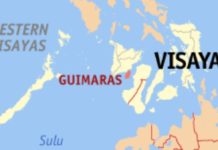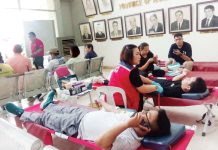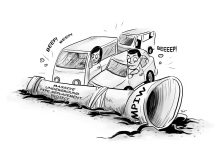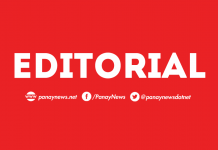
[av_one_full first min_height=” vertical_alignment=” space=” custom_margin=” margin=’0px’ padding=’0px’ border=” border_color=” radius=’0px’ background_color=” src=” background_position=’top left’ background_repeat=’no-repeat’ animation=”]
[av_heading heading=’ URBAN FARMER ‘ tag=’h3′ style=’blockquote modern-quote’ size=’30’ subheading_active=’subheading_below’ subheading_size=’15’ padding=’10’ color=” custom_font=”]
BY JULIO P. YAP JR.
[/av_heading]
[av_textblock size=” font_color=” color=”]
Monday, October 16, 2017
[/av_textblock]
[av_textblock size=’18’ font_color=” color=”]
USUALLY, only live goats were sold by the concerned farmers. Now, they can even earn more by marketing forages.
Additional income can be generated from processing the forage into pelletized complete rations as well as selling the fabricated pelletizer.
In a study conducted at the Central Luzon State University (CLSU) in Nueva Ecija, leguminous forages can be dried to become leaf meals and added with rice bran, copra meal, and minerals.
The mixture is passed through a locally fabricated pelletizing machine to produce pellets, the size of which is tested to become best suited for the goats.
At least two formulations of the pellets were prepared, customized to satisfy the nutrient requirements of the dam during lactation and the kids during their growing period.
This initiative can address the problem of unstable supply of forages, where they are abundant during the wet season but insufficient during the dry months.
This leads to imbalanced feeding, which affects the dam’s conception rate, kidding interval and milk production, and the kids’ growth.
Considering the emerging need for a stable source of quality feeds, this product can be turned into a financially rewarding enterprise.
A prospective entrepreneur can start the business for as low as a P509,375 long term capital investment, and P895,294 operating capital to produce 115.20 metric tons (mt) of pellets, which can feed 153,600 goats per day or 1,280 goats at 120 day-feeding.
An average annual net cash flow of about P254,117 per year in a period of five years can be generated, which can recover the investment in a period of 3.4 years.
The Net Present Value (NPV) or the present value of the potential net income in five years is estimated at P535,223, the Internal Rate of Return (IRR) or the potential rate return in five years at 43 percent and the return per peso invested or Benefit-Cost Ratio (BCR) is 1.17.
A lower volume of annual production of 86,400 kilograms (86.4mt) is still profitable.
On the other hand, this will give an IRR of 15 percent, NPV of P121,023 and BCR of 1.09.
This implies that for both these scales of production, the investment will create a rewarding opportunity for the investor.
Another business enterprise is fabrication of the pelletizing machine.
Currently, only two fabricators are licensed by the Technology Application and Promotion Institute of the Department of Science and Technology (TAPI-DOST) – one in San Jose City, Nueva Ecija, and one in Davao City.
As of last June, 12 units of the pelletizing machine have been sold at P48,000 per unit.
These initiatives were developed by the group of Dr. Edgar Orden and promoted through various means by the group from CLSU, including Dr. Ma. Excelsis Orden, Matilde Milicent Recto, and Jackielou Gallarde.
Their projects were funded by the Philippine Council for Agriculture, Aquatic and Natural Resources Research and Development of the DOST (PCAARRD) and won as one of the Best Development Projects during the recently held National Symposium on Agriculture, Aquatic and Natural Resources Research and Development. (jaypeeyap@ymail.com/PN)
[/av_textblock]
[/av_one_full]







